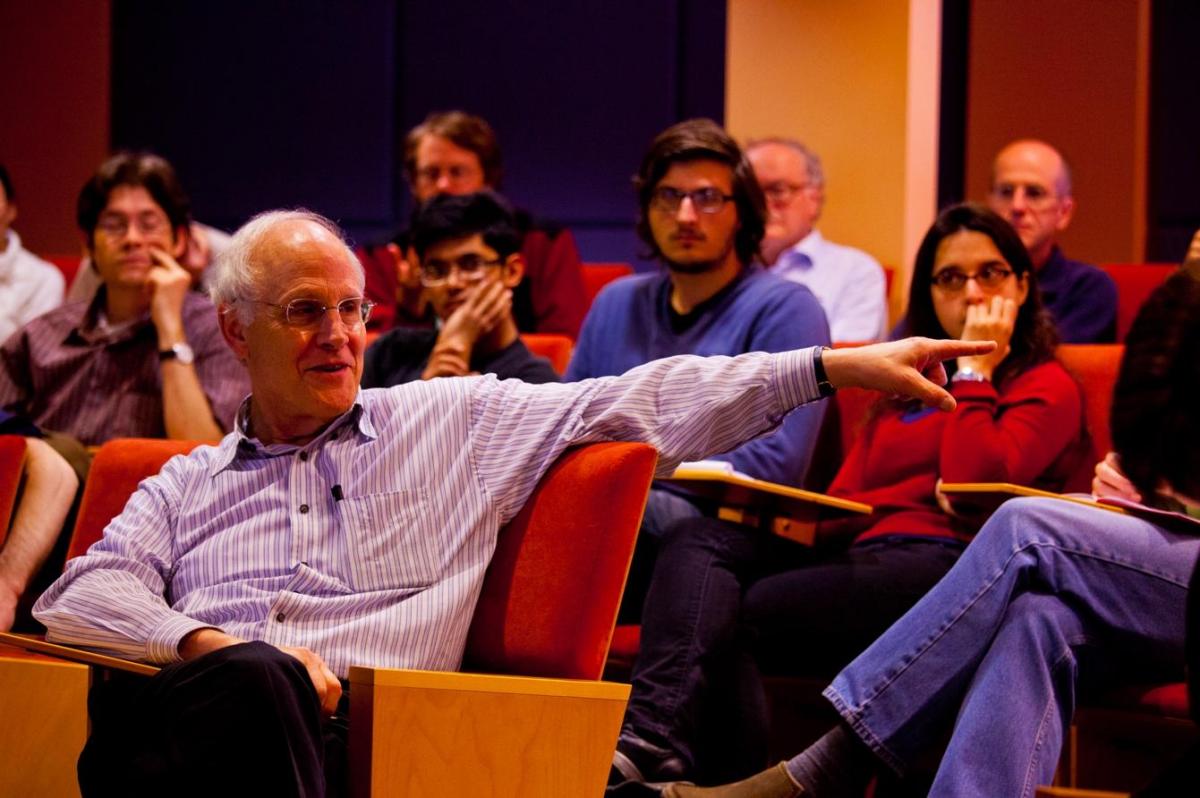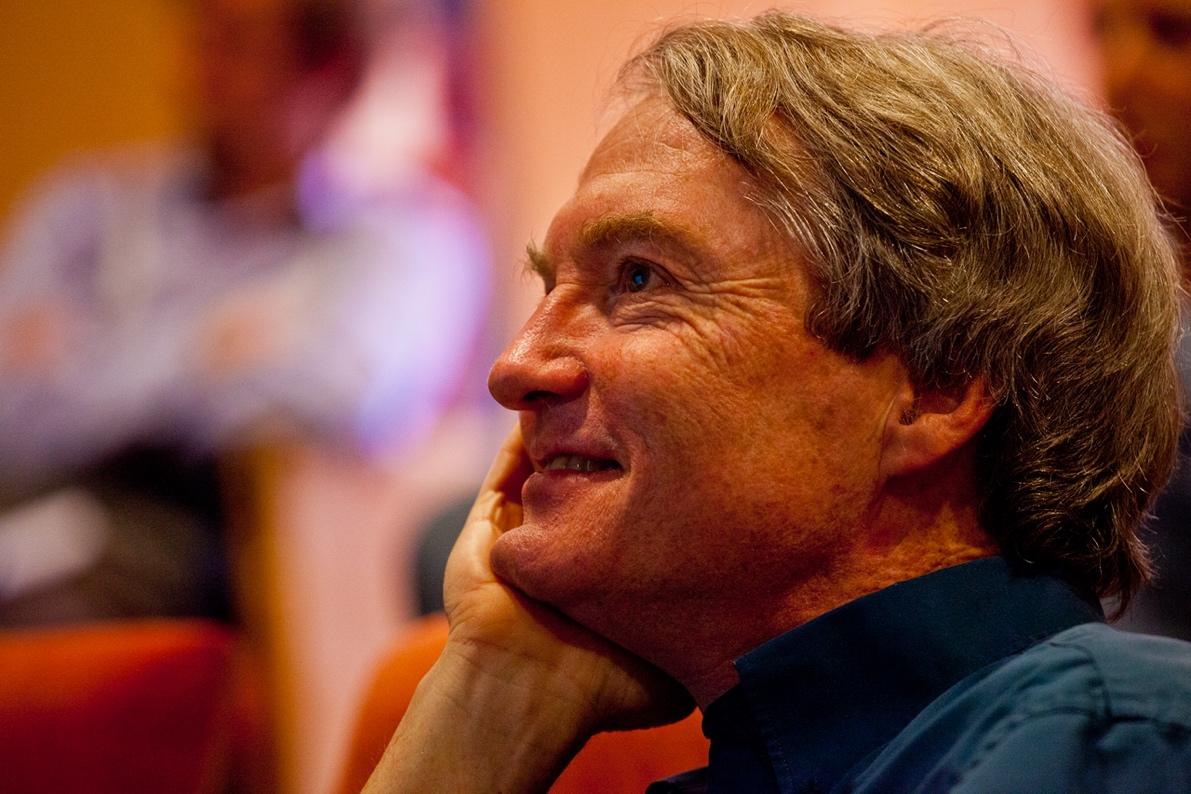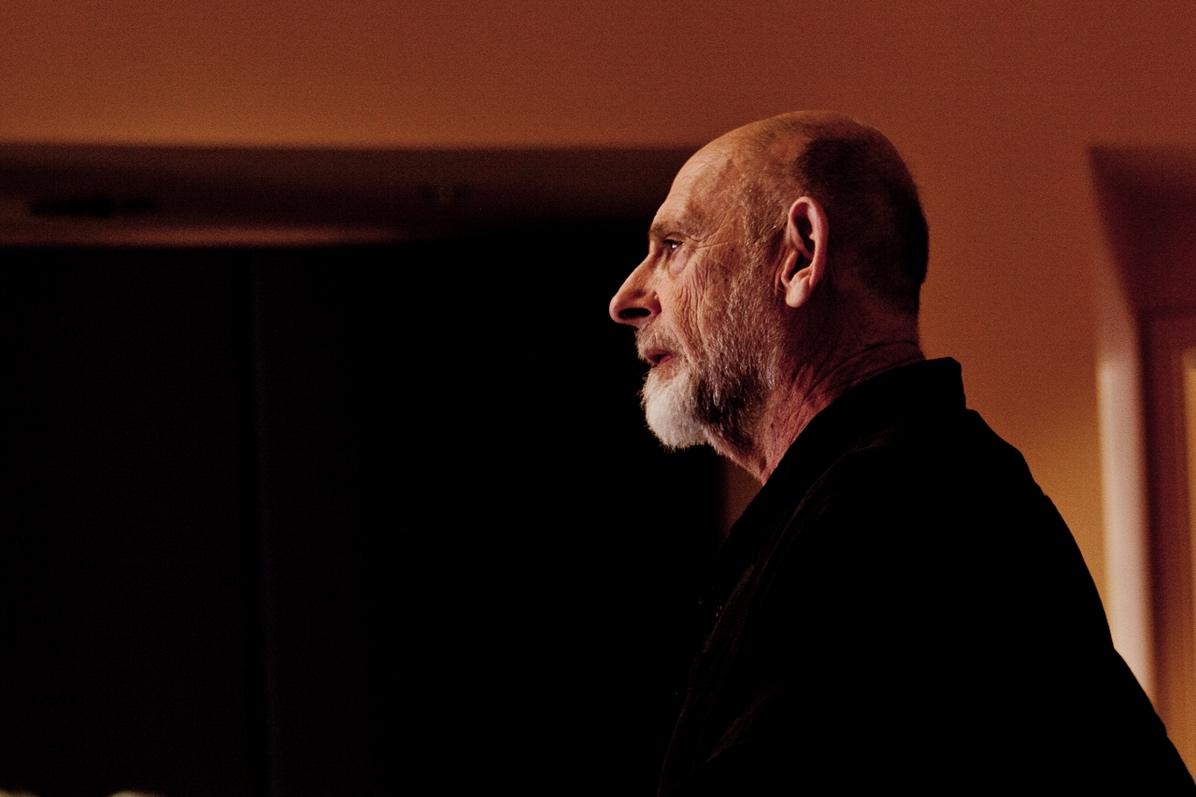In my graduate career, I observed many KITP lectures and outreach events; however, my Ph.D. is not in Physics, but in Theater and Performance Studies. In my work, I examine the intersections of performance and scientific practice. Science outreach and communication has significant theatrical history, from the Lavoisiers’ 1789 satirical mock trial in defense of their discovery of oxygen (culminating in a ritual burning of books on the competing theory of phlogiston), to Henri Robin’s dazzlingly staged astronomical spectacles in nineteenth-century Paris, to public research lectures and press conferences made popular in the twentieth century: all ancestors in a long lineage leading to KITP’s public lecture performances. In conducting my research, KITP’s unique position as a world-class scientific institute with a legacy of public outreach (alongside rigorous archive-keeping) shaped my research immensely, leading to new conceptualizations of performance in scientific knowledge production.
One of the first research lectures I attended at Kohn Hall took place in the Simons Amphitheater. Arriving early, I entered the room prior to the start of the event. Even when devoid of human interaction within its vibrant salmon walls, it was clear to me that this space was designed for performance, centering the act of observation; indeed, architect Michael Graves drew on the semicircular arrangement of ancient Greek theaters in his design. As the audience of scientists entered, this theatrical space came alive with the human drama of Kohn Hall. The cozy auditorium grew warmer with conversation and literal temperature; the live, bodily co-presence of this ad hoc community of audience members — of scientists, physics students, and the speaker — was made palpable by the heat and humidity. Counter to the stereotype of the cold rationality of science, this coalescing community exemplified the vibrancy of science in action. Such gatherings, so dependent upon the live interaction of the lecture form, hint at how scientists depend upon means of performance in order to generate and share their findings.
 KITP Permanent Member David Gross and scientists in the Simons Amphitheater
KITP Permanent Member David Gross and scientists in the Simons Amphitheater
Photo credit: Gary Smaby
My Ph.D. dissertation at UC Santa Barbara, The Act of Discovery: Tracing Performance in/of Scientific Knowledge Production, digs beneath the surface of these research talks, uncovering strategies within scientific epistemological practices that engage qualities of performance. I developed my conceptual framework through examining research lectures at KITP, identifying performance within the practice of thought experimentation and the cognitive processes of discovery. I further investigated how lay-oriented publications and outreach talks encourage audiences to enact discovery through engaging with thought experiments based on familiar experiences. Synthesizing scholarly conversations across humanities fields, my analysis highlights the heuristic and epistemological capacities of performance, drawing from contemporary lectures as well as archival cases including talks of Polchinski, Susskind, Shankar, and more.
 Joseph Polchinski
Joseph Polchinski
Photo credit: Gary Smaby
 Leonard Susskind
Leonard Susskind
Photo credit: Gary Smaby
Engaging performance-based means to prompt reenactments of discovery, thought experiments are a particularly distinctive practice in physics; as such, my dissertation focuses on thought experiments designed to share theories of physical laws, from Galileo to Einstein to emerging theoretical physics. Drawing on these cases, I contend that scientific thought experiments stage imagined scenarios within the minds of the audience, allowing for a mentally enacted form of performance that translates new scientific concepts through recalled familiar embodied experiences. I further analyzed works of science-oriented theater from the Cold War, namely the plays Galileo and The Physicists, as well as the opera Einstein on the Beach, to highlight how theater can stage scientific discoveries. I highlight how science theater physicalizes thought experiments onstage to communicate key concepts of physics to a broad audience; in particular, in analyzing Einstein on the Beach (a title possibly inspired by a photograph of Einstein in Santa Barbara) I identify how the opera stages Einstein’s famous thought experiments involving relativistic trains and frame-dependent simultaneous flashes of light through its avant-garde aesthetic, imparting a sensorial awareness of the physicist’s theories to the audience.
Thought experiments, I argue, encode knowledge within quasi-dramas with engaging narratives and stock characters (Alice and Bob) through which one can perform a mental experiment within the theater of the mind. Through descriptive imagery and clear establishing parameters, a physicist “sets the stage” and encourages participation in the imagination. In subsequent narrated events akin to scripted stage direction, the audience is led to mentally carry out the described action. These events, whether mundane (riding an elevator) or fantastically impractical (falling into a black hole), recuperate and build upon familiar sensorial experience to transmit mathematical concepts in a clear, concise manner. In research talks, this is done in tandem with mathematical explanation; however, public outreach lectures rely considerably more on these performative, narrative-based approaches. Throughout, as I personally experienced in numerous talks, the audience is guided to recreate some sense of the cognitive breakthroughs of the researcher, reenacting the process of discovery for themselves. In uncovering such overlooked performance strategies that underlie processes of scientific discovery and communication, I bring together scholarship from performance studies, theater studies, science and technology studies, and the philosophy of science, working across disciplines to intervene in extant understandings of the production of scientific knowledge.
Theater scholar Bert O. States once noted that “scientists probably don’t become scientists, or artists artists, to discover new things, but to perform the activity of discovery, which is one of the great pleasures of life.” Pointing out the similarities of performance — specifically, that of the act of discovery — across disciplines, States contends that the joy found in the process of discovery is more compelling than the simple knowledge of the discovered fact. Though art and science may seem vastly different on the surface, this pleasure of discovery is shared by the two. Employing language that implies a theatrical metaphor and evokes action within discovery, States suggests performance as a key component of this unifying feature. My focus on the act of discovery builds upon States’ supposition and bears interdisciplinary motivation.
As Joe Polchinski once quipped at his 2014 “Spacetime versus the Quantum” KITP outreach talk, displaying a slide with the Dirac equation, “I know… you’re not supposed to have equations in a public lecture… so think about this as a piece of art.” In my work, Polchinski’s quote serves as a useful guiding metaphor. I take his remark as an imperative challenge, seeking to look beyond the equivalence Polchinski implored in order to probe a deeper connection: not simply an equation as art, but how scientific knowledge is, at times, communicated through means of performance. The framing of performance as a means of knowledge-making that functions within not only art, but scientific practice as well, is a common thread that links the case studies of my dissertation, many of which come from the lectures I observed at KITP.
KITP’s status as a nexus of top physics research with a legacy of communicating science through invigorating, collaborative lectures and public talks made it a prime place to study performance within scientific practice. My experiences at KITP helped me to shape my research; the case studies that influenced my work stand as a testament to the institute’s remarkable capacity for not only serving as an incubator for groundbreaking research in theoretical physics, but also for communicating this vital work to the public.
by Cole Remmen
UCSB, Ph.D. 2023
